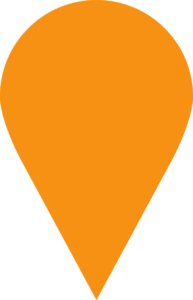Suas Educational Development |  Dublin, Ireland
Dublin, Ireland
Objectives
Findings
Question
Suas believes in the power of young people to make a positive change in the world.
Their Volunteer Programme enables young people to put their skills, talents, passion and enthusiasm to remarkable use – serving the Partners, teachers and children with whom Suas work. In addition to the hands-on placement in schools, the Volunteer Programme is about trying to get a better understanding of the world in which we live. Throughout pre-departure training and on placement, they support Volunteers to explore global issues and gain a deeper understanding of development, the local context, and of the world.
They also run a Global Citizenship programme, with courses organized at Irish universities (DCU, NUIG, TCD, UCC, UCD) twice a year. At the beginning of the academic year, Suas organizes public events, like speaker series and exhibitions. These are meant to inspire students to engage with global issues (that is, issues around the Millenium Development Goals). Following these events, Suas runs the ‘Global Issues’ Course, which aims to engage students with these issues in greater details over the course of seven weeks.
At DataKind Dublin’s first DataDive, Suas wanted to explore their applicant data as well as results they’ve captured for the children they work for. For both their Volunteer Programme and their Global Citizenship Programme, they wanted to know how they could increase the uptake of places by those applying, how to choose the best applicants, and in turn how they can make the greatest impact for those they work with, both the beneficiaries in programme countries and the young people that volunteer their time to support their mission.

What Happened
Suas Global Citizenship Initiative
The two main areas worked on over the weekend related to attendance records (and associated course application data) and course feedback surveys and free text data. The attendance data was used to provide Suas with a better understanding of course completion rates across student profiles and course instances.Simple univariate analysis and charts were used to illustrate these potential relationships, and highlighted for Suas some gaps in data collection, notably with regards to linking individual participants with the feedback data. Their current model of acceptance to course of first-come-first-served may not be conducive to optimum completion rates (drop out rates were consistently higher than they expected).
Course feedback data were from course facilitators (text and commentary) and from students themselves (free text and survey questions). Sentiment analysis was used to identify sentiment on core issues pre/post-course. Topic modelling was used to explore course learning outcomes. Positive and negative sentiment were then used to identify associations between topics and positive/negative sentiment. Survey data was analysed over time to identify evolution of participant knowledge for course as a whole, and over pre-post course to identify effectiveness of course in delivering learning outcomes.

Suas Volunteer Programme
The main areas worked on over weekend centered on the children pre-post intervention data and volunteer journey data (feedback surveys, salesforce application data). We focused our efforts on data exploration and simple correlations. Overall children tended to improve post intervention, but it was not possible to identify what factors may be involved in this because the links between children/schools and volunteers were not robust.
The feedback and volunteer journey data identified useful areas for Suas to work on including helping the charity to realise that their application funnel was nowhere near as bad as they thought it was. Recommendations were made to Suas to focus on data capture and developing questions around measuring impact and improving operations, which was very well received by their representatives. They have begun steps to improve their processes based on their learning from the DataDive



